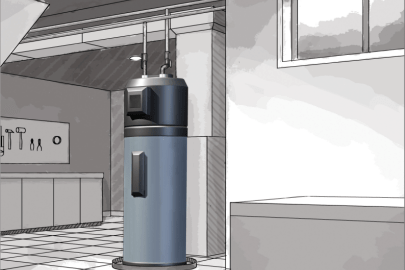How do you actually feel on the subject of Tips For Maintaining Your Hot Water Heater?

Hot water is crucial for daily convenience, whether it's for a revitalizing shower or washing dishes. To ensure your hot water system runs effectively and lasts much longer, regular maintenance is key. This short article offers functional pointers and insights on how to preserve your home's warm water system to stay clear of disruptions and costly repair work.
Intro
Preserving your home's warm water system might appear challenging, yet with a few basic steps, you can ensure it operates efficiently for several years to find. This guide covers everything from comprehending your hot water system to do it yourself maintenance tips and understanding when to call specialist help.
Significance of Preserving Your Warm Water System
Regular maintenance not only expands the life expectancy of your hot water system however also guarantees it operates efficiently. Disregarding upkeep can result in decreased performance, higher power expenses, and also premature failing of the system.
Signs Your Hot Water System Demands Maintenance
Knowing when your warm water system requires attention can protect against significant issues. Watch out for signs such as irregular water temperature, unusual noises from the heating unit, or rustic water.
Flushing the Hot Water Heater
Flushing your hot water heater eliminates sediment build-up, boosting effectiveness and prolonging its life.
Monitoring and Changing Anode Rods
Anode rods prevent rust inside the storage tank. Inspecting and changing them when worn is important.
Complex Concerns Calling For Expert Help
Instances include significant leaks, electric issues, or if your hot water heater is constantly underperforming.
Routine Specialist Upkeep Perks
Professional upkeep can include thorough examinations, tune-ups, and guaranteeing conformity with safety and security requirements.
Inspecting and Changing Temperature Level Settings
Readjusting the temperature setups guarantees optimal efficiency and security.
Do It Yourself Tips for Maintenance
You can execute a number of upkeep tasks yourself to keep your warm water system in top problem.
Looking for Leaks
Regularly check pipes and links for leaks, as these can result in water damages and greater bills.
Recognizing Your Hot Water System
Before diving right into maintenance tasks, it's practical to understand the fundamental parts of your hot water system. Commonly, this includes the water heater itself, pipelines, anode poles, and temperature controls.
Regular Monthly Upkeep Tasks
Normal regular monthly checks can assist capture small issues before they intensify.
Examining Pressure Alleviation Valves
Examining the pressure relief valve guarantees it operates correctly and avoids extreme pressure buildup.
Protecting Pipelines
Insulating hot water pipelines reduces warm loss and can save power.
When to Call an Expert
While do it yourself maintenance is advantageous, some problems need expert know-how.
Final thought
Regular maintenance of your home's hot water system is necessary for effectiveness, longevity, and price financial savings. By adhering to these ideas and knowing when to seek professional aid, you can make sure a reliable supply of hot water without unexpected disturbances.
How to Maintain an Instant Hot Water Heater
Before tinkering with your hot water heater, make sure that it’s not powered on. You also have to turn off the main circuit breaker and shut off the main gas line to prevent accidents. Also turn off the water valves connected to your unit to prevent water from flowing into and out of the appliance. 2. When you’re done, you have to detach the purge valves’ caps. These look like the letter “T” and are situated on either side of the water valves. Doing so will release any pressure that has accumulated inside the valves while at the same time avoid hot water from shooting out and burning your skin. 3. When the purge valves’ caps are removed, you have to connect your hosing lines to the valves. Your unit should have come with three hoses but if it didn’t, you can purchase these things from any hardware or home repair shops. You can also get them from retail stores that sell water heating systems. Read the user’s manual and follow it to complete this task properly. When the hosing lines are connected, open the purge port’s valves. 4. You should never use harsh chemical cleaners or solutions when cleaning your unit. Make use of white vinegar instead. It should be undiluted and you’ll probably use about 2 gallons. 5. Now flush your water heater. This task should probably take about 40 minutes. We can’t give you specific directions for this because the procedure is carried out depending on the type, model and brand of your heater. With that being said, refer to the user’s manual. 6. When you’re done draining the unit, you have to turn off the purge port valves again. Remove the hosing lines that you earlier installed on each of the water valves. Put the valve caps (purge port) back in their respective places and be very careful so as not to damage the rubber discs that are found inside these caps. 7. Now that everything’s back in place, check your user’s manual again to find out how to reactivate your water heating system. 8. Once it is working, turn one of your hot water faucets on just to let air pass through the heater’s water supply pipes. Leave the tap on until water flows smoothly out of it. https://www.orrplumbing.com/blog/2014/september/how-to-maintain-an-instant-hot-water-heater/

As a person who reads on What Kind of Maintenance Do Water Heaters Need?, I was thinking sharing that excerpt was really helpful. Sharing is caring. Helping others is fun. Thank you for being here. Return soon.
Schedule Today